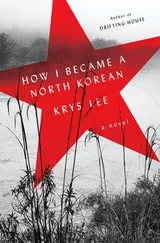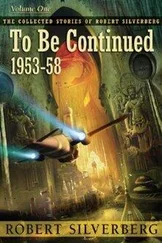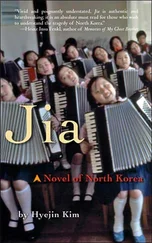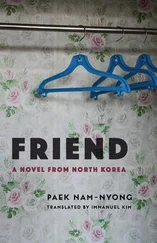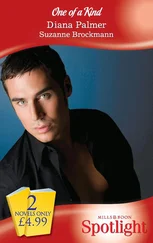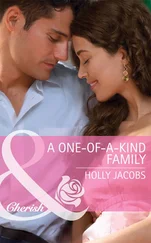Sun Hi looks queasy: “Ah, that’s a joke, right? You’re making fun!”
I shake my head. “It’s true. In New Zealand and some parts of America, gay people can get married, by law. Some of my best friends are gay, with children. You know, two mums with a little boy, or two dads with a little girl. It’s all completely fine.”
Sun Hi gasps in horror. I can almost hear the synapses exploding in her brain. “I’m sorry, too much,” she says, and turns very quiet. I leave Sun Hi contemplating her lap in a state of mute shock and turn my attention to the road. We’ve been driving through what seems to be one huge barley field for an hour now—the neat furrows interspersed with people pulling ox-drawn carts and carrying hessian sacks. A fine mist blurs the valley into soft greens and greys. It is as serenely pretty as the Thai countryside of my childhood—without the Coke ads.
I scour the landscape for signs of the other North Korea, the one even Nick Bonner says exists outside the cosy bubble of Pyongyang. The rumours are horrific: the coastal town of Wonsan, romanticised in North Korean tourist brochures as a laid-back seaside resort, purportedly contains a barbed-wire gulag, to which old people are lured with promises of retirement, then put to work. Defectors from the North speak of farmers being shot for raiding communal orchards to feed their families. Footage smuggled from the east shows gangs of orphans as young as five begging for food in the streets and huddling together in burnt-out basements to sleep. Even the United Nations, with its staunch reliance on fact over rumour, maintains that malnutrition is rife, with a third of the people outside Pyongyang lacking basic food and sanitation at any one time.
The road we’re on, however, either runs through an unusually prosperous part of the country, or the starvation is much further away. The people working in the fields, so far, seem purposeful, well fed, and fit. As we approach a new military checkpoint on the border of South Pyongan province, the benign normality starts to shift. A little boy, no more than four, stands alone on a muddy path in a dirty blue sailor suit, looking stunned. The people walking past ignore him, and further on, a group of farm workers see our van and immediately scurry into the field, as if in fear of being accosted. As the guard unlocks the wire gate to let us through, ten people waiting on the other side quickly bicycle past us, their eyes lowered under sodden hoods. In the pannier of the closest cyclist, I see two shaggy puppies, strung together by their necks. Their tongues loll with thirst, but they don’t squirm—their legs appear to be broken. These are the first dogs I’ve seen in my entire time in North Korea. They don’t look like pets.
“In front of you is an endless paradise you can’t see anywhere else in the world,” intones the Taedong Apple and Turtle Farm video as we enter the foyer. “Yearly, it processes thirty thousand tonnes of fruit and fifty thousand tonnes of fruit products. We owe it to the grand ideas of our Great General. He provided us with a sea of apple blossoms!” The boiler-suited ladies feeding apples onto a space-age conveyor belt morph from virtual to real, as the guide leads us onto a glass platform, looking down on a processing machine the size of a nuclear reactor. The ladies from the video wear plastic booties and caps and move over the white floor with scientific precision. They are feeding perfect pink apples into a twisted chrome pipe that could double as a Marc Newson sculpture. At the other end of the pipe, shiny bottles stamped with the Taedong logo glide along a conveyor belt, pumped full of the Great General’s life-prolonging nectar.
“It is true this factory produces the highest quality juices, soaps, and shampoos,” the guide says, ushering us into a sky-lit vestibule that features Kim Jong Il in a field of apple blossoms, stroking his double chin. “This is the very lift the Great General used, when he came to give us his benevolent guidance.” The guide and Sun Hi step back from the elevator door, so we can admire the gold sign above it: Our Dear Leader Kim Jong Il used this lift on July 21, 2011 . We are then led along a second glass walkway, suspended over more processing labs. Some contain tank-sized vats of shampoo, others massive cylinders of yellow and pink soap. All are suspiciously empty. “Where are the workers?” I ask.
“They are having a break,” Sun Hi replies, not very convincingly.
The long white corridor to the visitors’ centre is also worker-free. In a brightly lit shop, an aggressively rouged lady in a duck-egg blue uniform welcomes us to peruse aisles of jams, pickles, and cosmetics, all made on the farm. High on the wall, a TV is mounted on an altar, wreathed with flowers. It is playing We Met Again on Mount Myohyang , a film celebrating Kim Jong Il’s love of nature. “Our Fathers found a great gold mine in Habiro Valley,” a noble park worker is telling his lover. “But our Great Leader had the mine abandoned, saying: ‘Mount Myohyang is more precious than gold.’ So we carved his song of love on the rocks.” The video cuts to a huge red slogan etched on a granite cliff. Then it segues into a karaoke-style clip of ruddy-cheeked factory girls singing as they polish apples on a factory floor. There are more workers in this one shot than we’ve seen in the entire Taedong Apple and Turtle Farm for the last forty minutes.
The guide takes us out into the drizzling rain to admire six huge greenhouses, each one perfectly smooth, grey, and empty. “Our Great Leader removed all the coal mines in this area, so our produce would not be damaged,” says the guide, and I’m seriously beginning to wonder if he removed all the workers too. Maybe Sun Hi’s right, and they’re just resting somewhere. Or maybe the regime is too energy-poor to keep this factory running all the time, and uses it as a fruit-themed sideshow for inquisitive visitors. Kim Jong Il’s love of nature could also be fake—but the propaganda devoted to it indicates the regime considers environmentalism important. The Dear Leader’s green cred has been mythologised in movies, plays, and books. In Kim Jong Il: A Life , the young Kim decides to find out why low-flying swallows forecast rain:
Kim Jong Il closely observed the flight of swallows for months. At last he learned the reason and said to his great-grandfather: “When it is about to rain, insects, not swallows, fly low first, because their wings become moist and heavy. The swallows fly low to catch the insects.” Struck by his cleverness, Kim Po Hyon embraced the boy lovingly and exclaimed, “What a wonder child I have in my family!” The village elders admired the boy, calling him a child prodigy. And he was loved by the People too, for his outstanding intelligence and wisdom.
“Where does the energy for this farm come from?” I ask the guide, aware that while North Korea has made noises about using renewable since 2011, the bulk of its electricity is still derived from hydroelectric dams and fossil fuels.
“We are building many solar farms and wind turbines,” says the guide, without hesitation. Then he lowers his voice to Sun Hi, his lapel mic picking up every word: “Should I tell her we use coal-fired power?”
“No, don’t bother,” Sun Hi answers. “Her country is being destroyed by gas mines. Just say something about that.” The guide nods, and turns to us with a sympathetic smile. “Anyway, I just want you to know that coal seam gas is very bad. I feel very sorry for your farmers.”
Sun Hi continues to massage her translations when we walk next door into an amphitheatre of concrete tanks. Long-necked turtles crawl on the mossy cement as a handful of workers in gumboots sluice them with hoses. The worker closest to us is wearing a floppy white seventies sunhat and flower-print blouse, rocking that retro-feminine look I now recognise as North Korean worker chic. “These turtles are very good for enhancing the brain function,” says the guide, lifting out an animal to show us its slimy, sharp brown teeth. “We grind up their blood and bones and feed it to the children before their exams.”
Читать дальше

